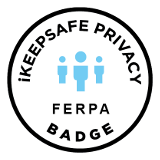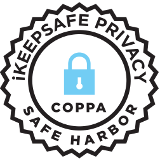
Suggested Strategies
The Smithsonian Learning Lab is about discovery, creation, and sharing.
 Discover
Discover
The thrill of discovery awaits you in the Smithsonian Learning Lab. From the Discovery space shuttle to the Star Spangled Banner to dinosaur fossils, the Learning Lab gives everyone with a desire to learn the opportunity to explore the Smithsonian's rich resources anytime, anywhere.
Learn More
 Create
Create
Free your imagination – create personal collections using the Smithsonian's vast resources and add your own resources or those from other sources. Add notes, develop quizzes or create complete lessons or artistic collections, and build upon each for more personal and memorable learning.
Learn More
 Share
Share
Quiz your students on the U.S. presidents; awe your friends with handpicked photographic art and share your personalized collections. Become part of a collaborative, global community of learners who are passionate about bringing to light new knowledge, ideas, and insight.
Learn More
Smithsonian Staff Picks
The Valentine Dress
Mary & Katy: See, Think, Wonder & Compare
Hamilton!
Have your students (or you) caught the Hamilton bug inspired by Lin-Manuel Miranda's musical? This collection is filled with resources and teaching ideas about the founding father. With his musical, Miranda has transformed teaching the Founding Fathers from distant and un-relatable to a relevant story of a hustling immigrant whose rise helps progress the American Revolution and set the new nation on track to become the economic powerhouse that it remains today.
Tags: Alexander Hamilton, ten dollar bill, Aaron Burr, duel, treasurer, financial plan, Federalist
 Kate Harris
Kate Harris Writing Inspiration: Using Art to Spark Narrative Story Elements
Targeted Vocabulary: Narrative, protagonist , antagonist, character, character traits, setting, plot, climax, and conflict.
After reading and analyzing several narrative stories for story elements such as character, setting, plot, climax, and conflict, students will use this collection to begin planning their own narrative stories.
Individuals or partners will first view the portraits and discuss possible stories behind each face before choosing a protagonist, antagonist, and supporting characters. They may begin to discuss and imagine character traits for each subject.
Next, the student will select a landscape setting in which the story may take place. The writer will describe the landscape, imagine a time period, and name the location.
Finally, the student will either choose an action artifact around which to build a major plot event, or have that slide as a minor scene in their story.
Students may use the Question Formulation Technique to garner ideas for background stories behind the faces. http://rightquestion.org/
Once the story elements are in place, the students may begin to draft narratives to develop real or imagined experiences or events using effective technique, well-chosen details, and well-structured event sequences.
With the artifacts selected as the major story elements, the students may begin crafting their narrative story. The artifacts can then be displayed as illustrations in the published narratives.












